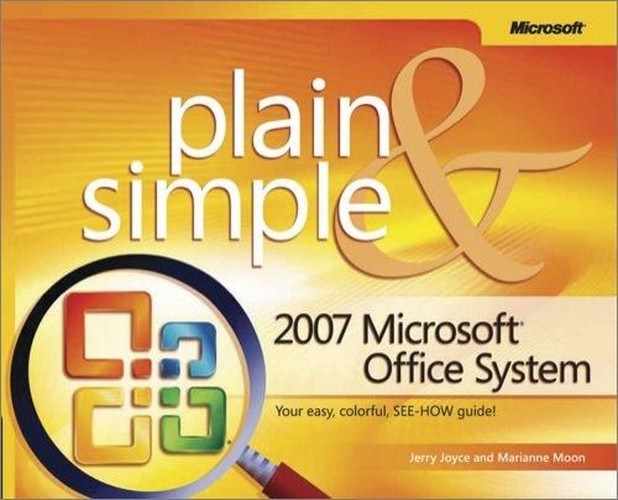In this section:
Beyond providing full-featured e-mail communications, Microsoft Office Outlook 2007 helps you manage the scheduling of appointments, meetings, and tasks, as well as all of the associated information. You can identify free time, schedule your appointments, and invite people to meetings, as well as quickly determine what is on your schedule for any day, week, or month.
Outlook makes it easy to document your own tasks and assign tasks to others, tracking their progress, and receiving an automatic notification when the task is complete. You can also easily share information about your contacts, by creating customized contact business cards that you can attach to your e-mail.
Although Outlook is easy to use, the Outlook program window can seem overwhelming to new users because it contains so much information. Once you understand how Outlook organizes and presents that information, however, you’ll have no trouble moving from folder to folder to view and manage your information. The main program window organizes all of your Outlook folders for easy access, and individual windows help you work with the different types of Outlook items.
Outlook 2007 sports a new look for its Calendar folder with additional color and visual elements. The Calendar also adds a Daily Task List pane at the bottom of the window. The Daily Task List shows the tasks that are due on the current date, such as tasks with that day’s due date or e-mail messages with a follow-up date of that day.
You can view your calendar and make appointments complete with reminders, so you won’t forget. Upcoming events are listed in the To-Do bar in the main Outlook window, so you can check your schedule with a glance.
If you are using Outlook with Exchange Server, you can schedule meetings with other people and, if your network administrator has configured it, even reserve rooms. All without leaving Outlook!
The Contacts folder acts as an address book but also does much more. Contacts can contain a wide range of information: personal things like birthday, names of spouse and children; work-related information such as office location, title, and manager’s name; and Internet-related information such as IM identity and web page addresses.
You can also create customized business cards for your contacts, selecting the information and picture to use and then formatting it as you wish. Business cards can be shared with others, making it simple to build a network of business or personal connections.
Outlook lets you view your contacts as a series of single address cards or all at once, moving through your Contacts folder as if it were an electronic phone book or address book.



